 Those of you who regularly follow this blog know that every post in May 2014 was dedicated to the idea of how non-profit organizations build loyalty among various stakeholder groups (e.g. donors, board members, staff, volunteers, clients, etc). All of those posts culminated yesterday when DonorDreams blog hosted this month’s Nonprofit Blog Carnival. The theme for the carnival was “Letting the Nonprofit Sector Go to the Dogs.”
Those of you who regularly follow this blog know that every post in May 2014 was dedicated to the idea of how non-profit organizations build loyalty among various stakeholder groups (e.g. donors, board members, staff, volunteers, clients, etc). All of those posts culminated yesterday when DonorDreams blog hosted this month’s Nonprofit Blog Carnival. The theme for the carnival was “Letting the Nonprofit Sector Go to the Dogs.”
This morning I realized that the month of May isn’t over yet and found myself faced with the following decisions while plodding away on the treadmill:
- Skip today’s post and let readers continue feasting on a ton of content left over from yesterday’s Nonprofit Blog Carnival
- Write one more post on loyalty
- Pretend that it is June and push forward with new topics
While it was tempting to skip a day, I ultimately decided to stay the course with one more post about building loyalty.
Instead of pontificating on the subject, it dawned on me that in all of my reading on the subject of loyalty there are always beefy bibliography sections and references. So, I decided to toss a bone to those of you who are thirsty for more reading on this subject by publishing some of the more interesting written and online references and tools (in a few cases the reources are books and the link points you to amazon.com).
 Enjoy the reading!
Enjoy the reading!
- The Loyalty Effect: The Hidden Force Behind Growth, Profits, and Lasting Growth by Frederick Reichheld
- Loyalty Rules! How Today’s Leaders Build Lasting Relationships by Frederick Reichheld
- “Dimensions of brand personality” by Jennifer L Aaker in the Journal of Marketing Research; Aug 1997
- “Why Do People Give? An Empirical Study on the Motives and Characteristics behind Individual Charitable Giving in England” by Loy Hui Sheng, Sylvester at the Department of Economics, University of Warwick, Coventry, UK
- “The Use of Pledges to Build and Sustain Commitment in Distribution Channels” by Erin Anderson and Barton Weitz in the Journal of Marketing Research; Feb 1992
- “Donor Retention: What Do We Know & What Can We Do about It?” by Adrian Sargeant in the Nonprofit Quarterly; August 15, 2013
- “What do donations buy? A model of philanthropy based on prestige and warm glow” by William Harbaugh in the Journal of Public Economics, May 1997
- “Managing donor defection: Why should donors stop giving?” by Adrian Sargeant in New Directions for Philanthropic Fundraising, Summer 2001
- “Ten Steps to Fundraising Success: Choosing the Right Strategy for Your Organization” by Mal Warwick and Stephen Hitchcock
- “Retaining donors with mission-driven stewardship events” by Shanon Doolittle in association with the Donor Retention Project
Have you read something recently on the subject of building loyalty hat your fellow non-profit peers might benefit from reading? If so, please use the comment box below to share that resource and point us in the right direction.
I hope you’ve enjoyed this month’s focus on building loyalty including the big build up to the May 2014 Nonprofit Blog Carnival.
Here’s to your health!
Erik Anderson
Founder & President, The Healthy Non-Profit LLC
www.thehealthynonprofit.com
erik@thehealthynonprofit.com
http://twitter.com/#!/eanderson847
http://www.facebook.com/eanderson847
http://www.linkedin.com/in/erikanderson847

 Approximately 14 years ago, I was a young and eager executive director of a non-profit organization in Elgin, Illinois. While I had already worked in a number of different capacities in the non-profit sector, it was the first time I had held the job of “executive director.” Thinking back to that time in my life is where I pull my inspiration for the May 2014
Approximately 14 years ago, I was a young and eager executive director of a non-profit organization in Elgin, Illinois. While I had already worked in a number of different capacities in the non-profit sector, it was the first time I had held the job of “executive director.” Thinking back to that time in my life is where I pull my inspiration for the May 2014 
 How to submit your work for consideration?
How to submit your work for consideration? Miscellaneous details?
Miscellaneous details?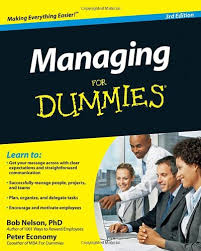
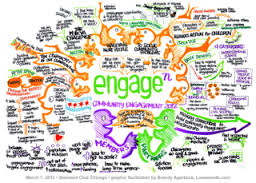 Here is how that new top ten list turned out for
Here is how that new top ten list turned out for  As many of you know, I’m on a temporary assignment for the next few months working with a group of 20 non-profit organizations throughout New Mexico and West Texas. Last night was my first site visit, and the executive director did something that inspired this morning’s post about personal (yet simple) ways to thank your donors.
As many of you know, I’m on a temporary assignment for the next few months working with a group of 20 non-profit organizations throughout New Mexico and West Texas. Last night was my first site visit, and the executive director did something that inspired this morning’s post about personal (yet simple) ways to thank your donors. This is what I saw:
This is what I saw: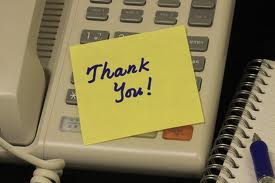 In recent weeks, I’ve started receiving phone calls from board volunteers thanking me for my support of their agency.
In recent weeks, I’ve started receiving phone calls from board volunteers thanking me for my support of their agency. I am a member of Gen-X, and I behave like a typical person of that generation especially when it comes to my mailbox. I hate going to the mailbox. I hate opening mail because 99.9% of it is junk. Anything important comes to me via email, and all of my bills and charitable giving is set-up using automatic bill pay. So, imagine my surprise the other day when I was opening a three-week stack of mail, and I came across a handwritten envelope from one of my favorite local charities.
I am a member of Gen-X, and I behave like a typical person of that generation especially when it comes to my mailbox. I hate going to the mailbox. I hate opening mail because 99.9% of it is junk. Anything important comes to me via email, and all of my bills and charitable giving is set-up using automatic bill pay. So, imagine my surprise the other day when I was opening a three-week stack of mail, and I came across a handwritten envelope from one of my favorite local charities.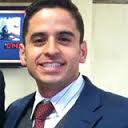 It happens every year. My partner and I get a phone call from Cindy, who is Ernie Gamino’s assistant, and she asks us to please schedule a year-end sit down meeting. Ernie is our Edward Jones financial advisor, and getting time in both of our calendars is a challenge. However, we found some time this past Saturday. I’m glad we did because I discovered that Ernie is a really good fundraising professional, who has never been trained as one or worked at a non-profit organization. We can all learn a lot from Ernie and his colleagues.
It happens every year. My partner and I get a phone call from Cindy, who is Ernie Gamino’s assistant, and she asks us to please schedule a year-end sit down meeting. Ernie is our Edward Jones financial advisor, and getting time in both of our calendars is a challenge. However, we found some time this past Saturday. I’m glad we did because I discovered that Ernie is a really good fundraising professional, who has never been trained as one or worked at a non-profit organization. We can all learn a lot from Ernie and his colleagues. I started the meeting off by growling at poor Ernie. I wanted to know why this annual meeting is necessary? Can’t he just go about doing his job and call me when he needs to get permission to do something with my investment portfolio.
I started the meeting off by growling at poor Ernie. I wanted to know why this annual meeting is necessary? Can’t he just go about doing his job and call me when he needs to get permission to do something with my investment portfolio.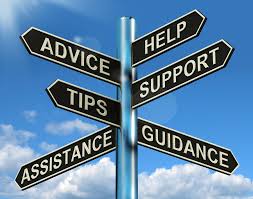 We talked about his Northern Illinois University (NIU) football team and the state of the BCS football system.
We talked about his Northern Illinois University (NIU) football team and the state of the BCS football system. Welcome to O.D. Fridays at DonorDreams blog. Every Friday for the foreseeable future we will be looking at posts from John Greco’s blog called “
Welcome to O.D. Fridays at DonorDreams blog. Every Friday for the foreseeable future we will be looking at posts from John Greco’s blog called “ The point I’m trying to make is that most non-profit organizations have built a culture that revolves around THE CLIENT. This focal point is so intense that ideas threatening to shift that focus are often seen as heresy.
The point I’m trying to make is that most non-profit organizations have built a culture that revolves around THE CLIENT. This focal point is so intense that ideas threatening to shift that focus are often seen as heresy.
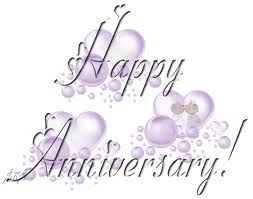 Every year, it seems like one of the charities I support is celebrating some kind of anniversary or milestone. Most of the time, it relates to the age of the organization, and it is typically a milestone like 25, 50, 75 or 100 years of existence. Sometimes it is a different kind of anniversary, where they’re celebrating a board member’s years of service or the age of something physical like a building. Regardless of the opportunity to celebrate, a fundraising solicitation is never far behind; however, anniversary celebrations can be so much more than just putting your hand out.
Every year, it seems like one of the charities I support is celebrating some kind of anniversary or milestone. Most of the time, it relates to the age of the organization, and it is typically a milestone like 25, 50, 75 or 100 years of existence. Sometimes it is a different kind of anniversary, where they’re celebrating a board member’s years of service or the age of something physical like a building. Regardless of the opportunity to celebrate, a fundraising solicitation is never far behind; however, anniversary celebrations can be so much more than just putting your hand out.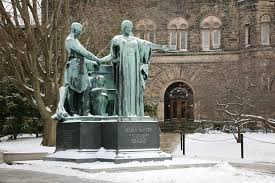 A few weeks ago, I started getting email and snail-mail announcing the 100th anniversary of the
A few weeks ago, I started getting email and snail-mail announcing the 100th anniversary of the  For example . . .
For example . . . Last week I was out with a friend for a glass of wine after work. We hadn’t seen each other in a few months, and we were catching up on lost time. “How are you? How is the new job? How’s your wife? Kids? Grandkids?” You know the drill. It was during this exchange that he dropped the bomb: “So, how is your partner? Ya know … the only time I ever see him is when he is asking me for a donation.”
Last week I was out with a friend for a glass of wine after work. We hadn’t seen each other in a few months, and we were catching up on lost time. “How are you? How is the new job? How’s your wife? Kids? Grandkids?” You know the drill. It was during this exchange that he dropped the bomb: “So, how is your partner? Ya know … the only time I ever see him is when he is asking me for a donation.”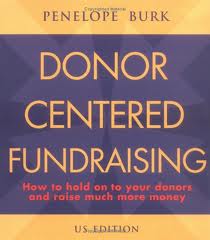
 These personal touches do not have to be all about your non-profit organization. I suggest that you train your volunteers to be less obvious. For example, both stewardship touches could be as simple as three minutes worth of messaging in the middle of a lunch meeting or after-work cocktail. It should feel organic and nature. It shouldn’t feel forced or contrived.
These personal touches do not have to be all about your non-profit organization. I suggest that you train your volunteers to be less obvious. For example, both stewardship touches could be as simple as three minutes worth of messaging in the middle of a lunch meeting or after-work cocktail. It should feel organic and nature. It shouldn’t feel forced or contrived.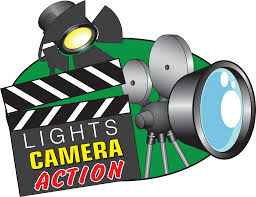 Last year I wrote a post titled “
Last year I wrote a post titled “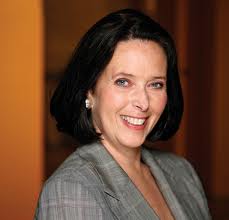
 Episode #239 . . .
Episode #239 . . .